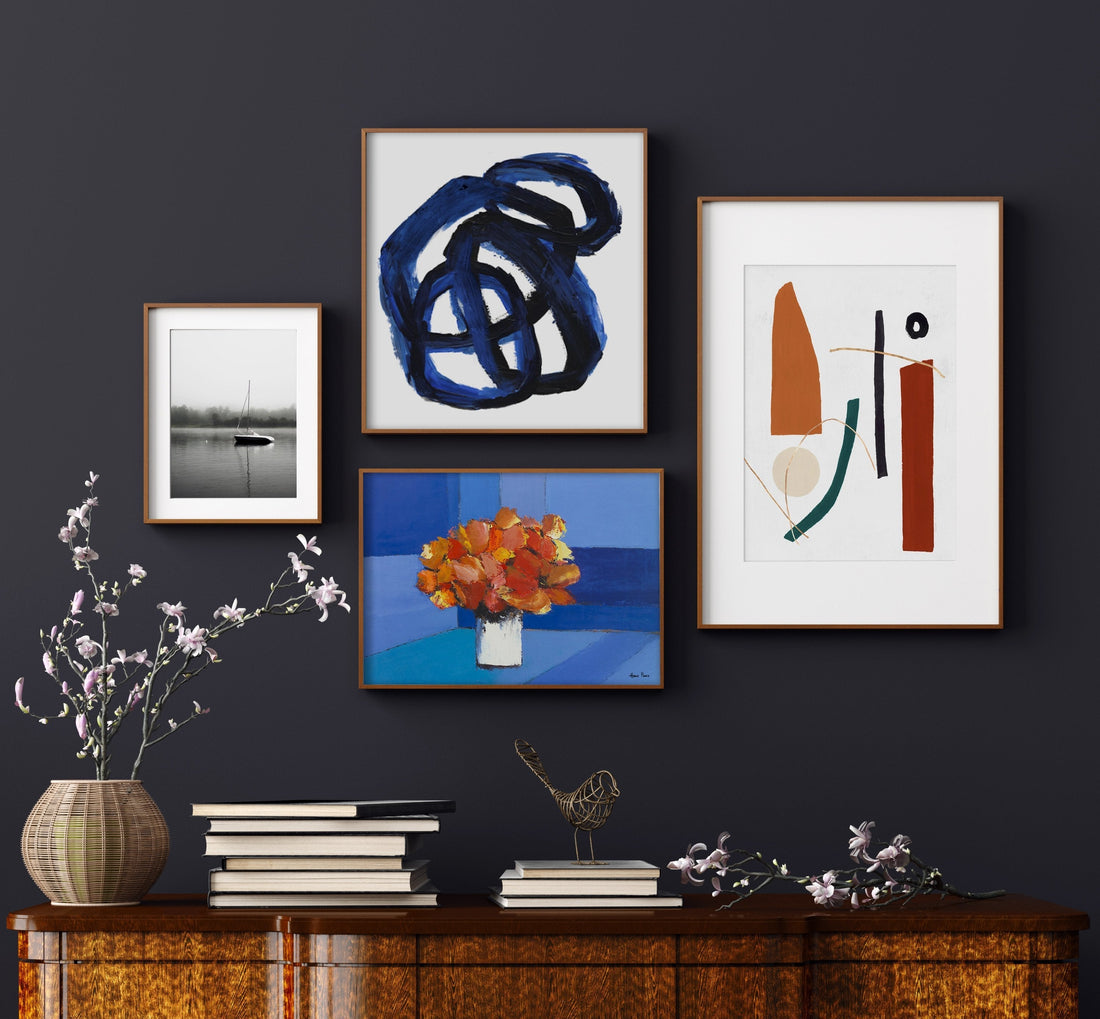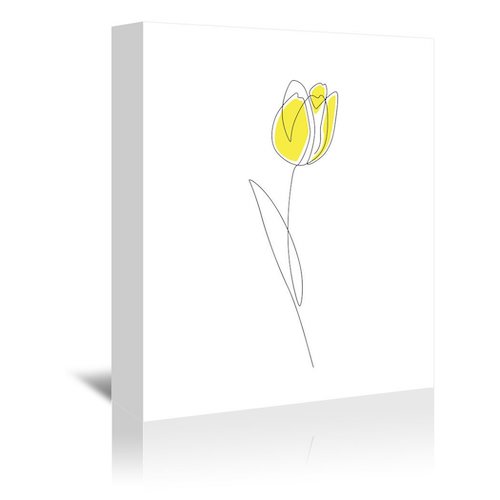Mixing these very different types of wall art can be a daunting task. Perhaps you're working off a textbook definition of each home decor style, or maybe you decorate with more intuition. Whatever your decorating approach, you want to create a combination that gives both wall art trends the space to shine. We’ve rounded up the essentials of both Modern and Traditional art styles so that you can move effortlessly through design planning and execution for your new walls!
Before we dive into the tips and tricks of combining traditional and modern wall art, let's start with a quick refresher of the basics for each dècor types. The more you know, right?
Traditional Wall Art
Traditional interior design and wall dècor has a historical appeal with roots in the 18th and 19th centuries. Inspired by elegant European structures, traditional design mixes a decidedly formal appeal with warm ambiance. Traditional art and homes have signature go-tos, like ornate details, formal subjects, and deep or dark color palettes. Spun for the present, traditional paintings and wall art informs popular 2020 themes like Grandmillennial interior design and floral art prints.
With centuries of history and iconic art movements, traditional interior design mixes mediums like photography, oil paint, and watercolor across art prints and stretched canvas. Subjects include scenery and idyllic landscapes, vignettes and still life, portraits, classicism and realism movements.
Sunset Harbor 1 by Ethan Harper / World Art Group
Sizing & Scale
Because symmetry is a quintessential part of traditional interior design, large pieces should be centered over furniture. If you are working with smaller pieces as a gallery wall, arrange them with no more than six inches of space between pieces.
Colors Palettes
Traditional interior design favors neutral and light colored walls accented with opulent jewel tones throughout the dècor, as well as dark, polished woods. Colors that sparkle with extra effects include emeralds, garnets, rubies, sapphire, and luxurious metallics.
Still Life 5 by Hans Paus
Modern Art Styles
Modern interior design favors an open plan free of clutter, and the decor mimics this enthusiastic ode to white space and purposeful flow. The modern design theme could be described as minimal, and it could also favor the abstract - which is not to say that this art style it is cold and uninviting. Modern interior design simply pays more attention to space and how to optimize each piece without overcomplicating it or the surrounding setting. Modern interior design is featured throughout the cult-status subcategories, such as Mid-Century Modern, Scandinavian, and Industrial.
Thoughtful editing aids in the surroundings’ composition. Art and decor can complement negative space with subjects like line drawings, ink patterns, symbolism, geometry, and collage art.
Sizing & Scale
Choose one large accent piece without a frame for maximum impact, and then hang it on a light-toned wall. Walls in a modern home tend to flow with one or two colors that are drawn from white or light, neutral hues. Like the paint color, modern design offers continuity through arrangement as well, so pay attention to natural lines created around the room by furniture, art, and spatial shapes.
Color Palettes
Modern wall art often leans towards monochromatic (e.g., black, white, and gray), earthy hues, and highly saturated colors of things found in nature. Favorites include variations of white, rust, citrus, saffron, tan, gold, sage, cerulean, navy, and charcoal.
Bring it all Together: The Best of Both Worlds
Just like we want multifunctional, multipurpose spaces that allow for a flow of creativity and a sense of effortless wellbeing, art should also serve an array of moods and needs. Decor is best when it is flexible, not overly-themed rooms. A mix of traditional and modern interior design offers a serendipitous opportunity for personal expression. One of our newest collections by Chaos & Wonder, brings together both worlds. Her designs beautifully combines both Modern and Traditional trends in a single unique piece or art.
Layering art and decor and blending styles offers an interesting new perspective. Here are five tips for bringing together both modern and traditional interior design:
- Let the art influence the aesthetic. Use the subject and colors of the art to guide choices of complementary furniture, textiles, and accent colors.
- Stick to one wall color or subtle palette. Both traditional and modern design thrive with clean walls. Choose a white that works best with the natural light in your space, and whether that requires an undertone of cream or gray.
- Embrace balance and symmetry. Visually, modern and traditional art designs thrive in rooms that don’t feel off-center or overwhelmed. Pay attention to how art, furniture, and decor is arranged within the landscape and center pieces in relation to each other.
- Mix accents and textures with the best of both movements. Jewel tone jade with organic neutrals. Rich navy with sand. Color palettes can also be inspired by a hue used in a single art piece.
- Edit, and then edit again. Wall art curation is an evolution. Let the feel of the space guide what stays and what goes. Also, check in at different times of the day when the light and energy is different and ask yourself, “Is this space serving its purpose well?” If it’s not, evaluate the color, form, space, texture, pattern, line, and light.







